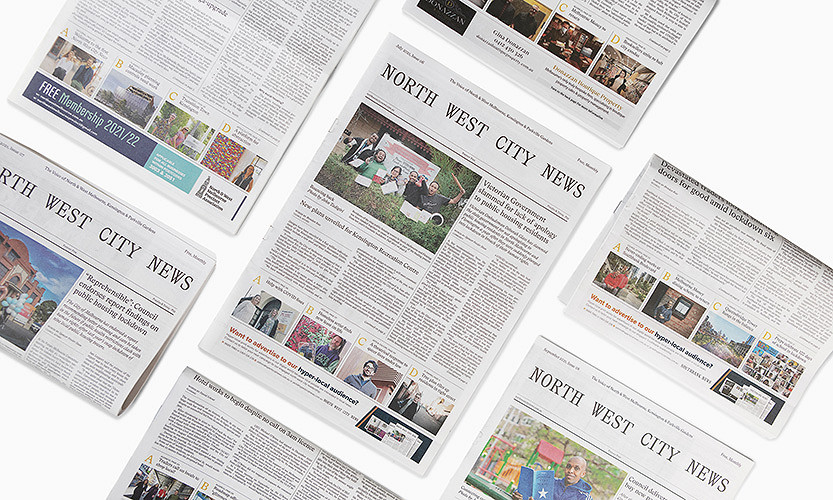A brief history of the Kensington Association
The Kensington Association (KA) was formed by a group of residents in 1997. Our mission is to help “protect and enhance the existing amenity of Kensington as well as to monitor development proposals in our community”.
We follow in a tradition of Kensington action groups seeking to influence the evolution of our suburb. David Ettershank was one of that initial group of residents who was chairperson for many years and is still an active member and he describes that 24-year history as follows …
“After a period of dormancy, the Kensington Association was resurrected in 1997/98 by a group of local residents aware of the increasing popularity of the suburb, a number of unsympathetic ‘in-fill’ development applications and the lack of any organised local oversight.”
The first significant association public action was an incursion into the CityLink construction site following the announcement that the acoustic tunnel over the elevated roadway would no longer extend along the Kensington boundary.
After good media coverage and the construction unions shut down works for the day, Transurban and the Minister agreed to negotiate some key issues. It was a good start. Since then the association has taken on a diverse range of issues and campaigns:
Refurbishment of the community centre and redevelopment of the Kensington Pool which had sat broken and empty for more than a decade.
This morphed into development the of JJ Holland Park Master Plan which included removal of the large carpark in the centre of the park, construction of the third oval with a synthetic playing surface, new playground areas, the skateboard park, refurbishment of the pavilion and extensive upgrades to enhance amenity.
Campaigns with schools’ communities to save Kensington Primary and the Holy Rosary Primary after demolition of two housing towers saw a major (but temporary) drop in enrolments. (The Kennett government was also keen to sell the Kensington Primary site!).
Traffic calming initiatives designed to reduce rat-running and cut the number of heavy vehicles.
A decade-long engagement with the state government and Becton over the Kensington Housing Estate redevelopment, the first housing Public Private Partnership.
A successful campaign to “reunite Kensington” shifting the boundary between Melbourne and Moonee Valley councils from Macaulay Rd to Racecourse Rd.
Successful campaigns against the East West Tunnel: the initial proposals were that JJ Holland Park would be subsumed as the western tunnel entrance.
Multiple campaigns relating to our waterways: the Maribyrnong River and the Moonee Ponds Creek.
Engagement with a huge number of development applications ranging from major commercial buildings such as the Younghusbands Woolstore redevelopment through to nasty smaller proposals from developers who just want to make money and get out.
Currently KA members are working on multiple projects including the Metro Tunnel (which goes underground at South Kensington station) the Westgate Tunnel, the next round of Structure Plans that will determine future development in the area and a plethora of development applications.
The usefulness and relevance of community organisations is directly proportional to how effectively they reach out in a collaborative manner into the community. We at the Kensington Association like to work closely with other groups, perhaps in particular Kensington Neighbourhood House, but also with Unison Housing, Flem/Ken Rotary and others. We also like to reach across Racecourse Rd to our comrades at the Flemington Association and other Moonee Valley groups; however, that’s not always easy to do – the juggling of municipal boundaries (stemming from the Kennett years) has not helped (to say the least).
When communities face a crisis, good collaboration is critically important. In Kensington we have the Kensington Community Network (which reaches across Racecourse Road into Flemington), comprising an extensive variety of community groups – social, educational, religious, artistic, commercial and government. This network has done (and continues to do) some sterling cooperative work during the COVID-19 pandemic, being particularly vigilant about who has been left out of the information or support loops.
Perhaps we in the Kensington/Flemington area take for granted how unique we are in terms of our political representation. How many inner suburban communities have such strong, progressive, resident representatives at both federal, state, and local government level? There is nothing like having political representatives who live in the community and have intimate knowledge of local issues. We at the Kensington Association hope this will stand us in good stead as we grapple with what David Ettershank calls “a plethora of development applications” … yes, Kensingtonians, for better or worse our suburb – being an inner suburb of our wonderful City of Melbourne, with significant industrial history – is facing a transformation. We need to be vigilant that Kensington does not morph into a soulless dormitory suburb; it is only through some special collaboration and determination that we can hope to retain the vibrancy, soulfulness, and close-knit community character that we know and love •

Jo Ryan unveils Ordered Chaos at Blender Studios






 Download the Latest Edition
Download the Latest Edition